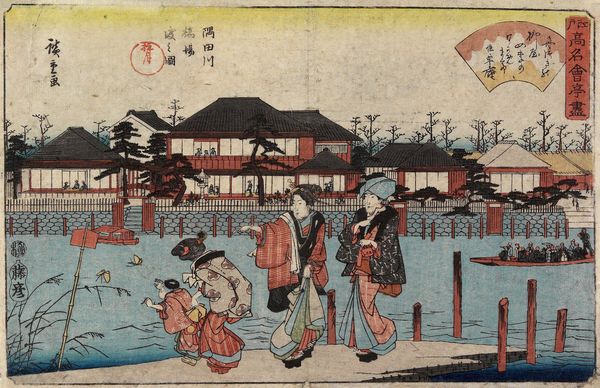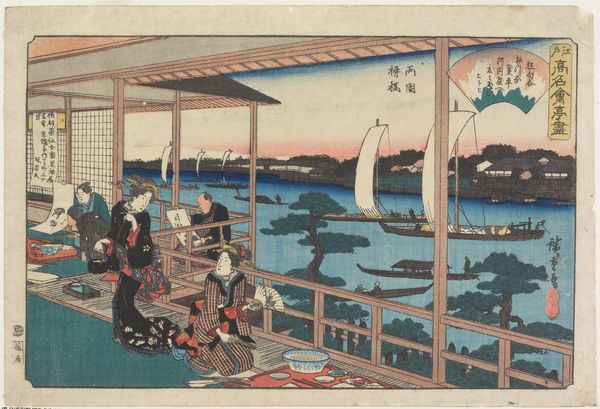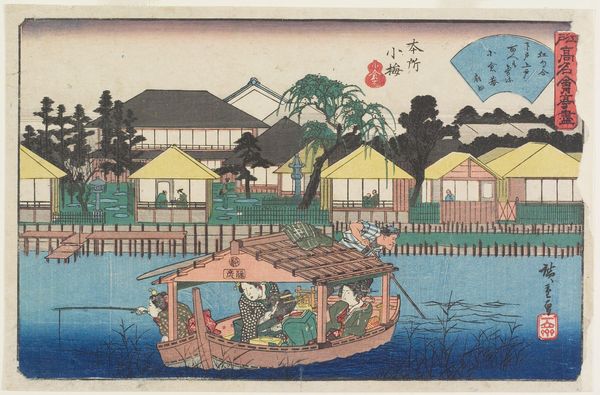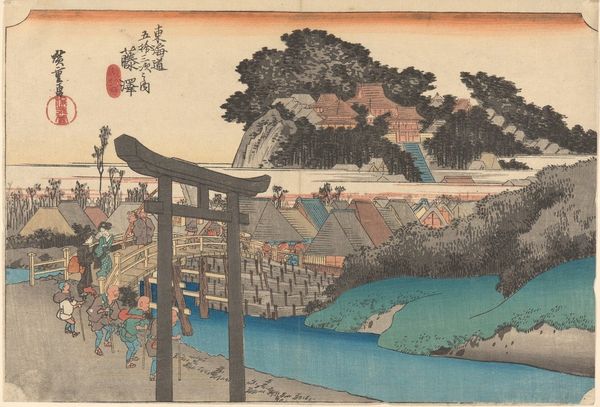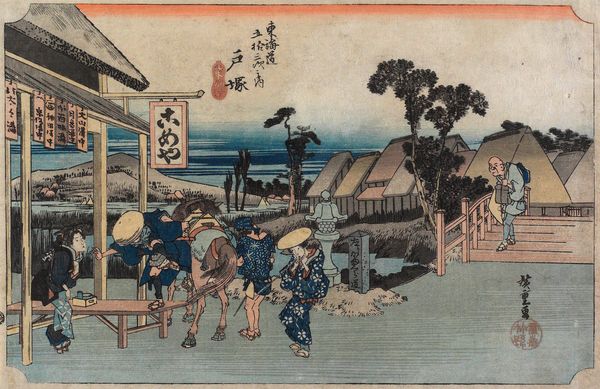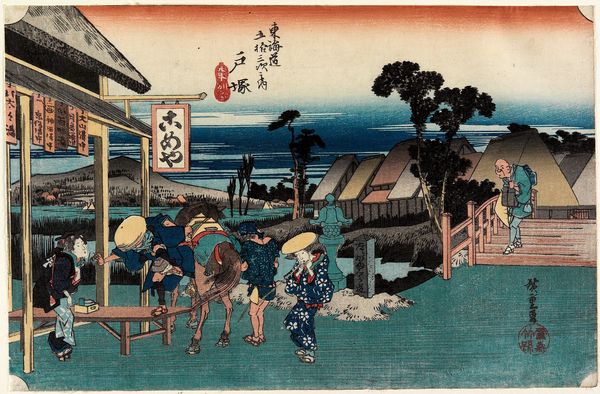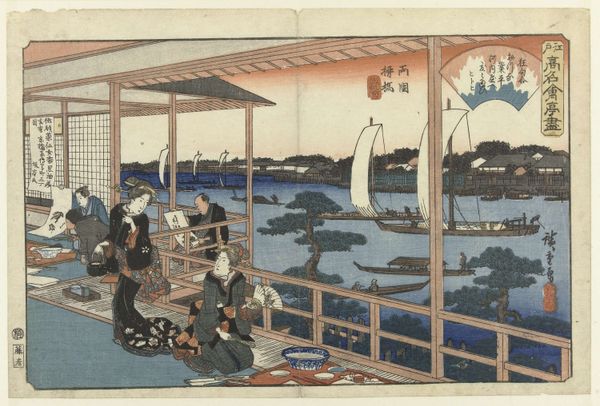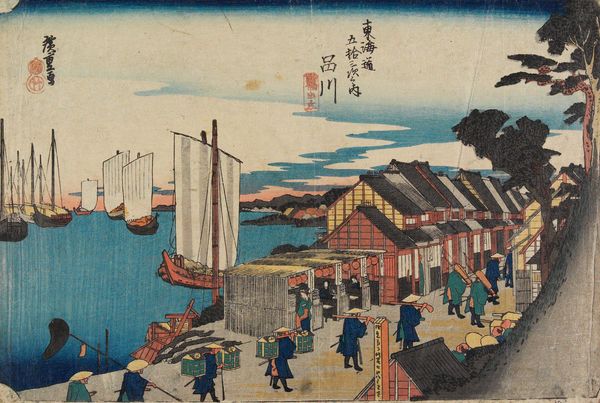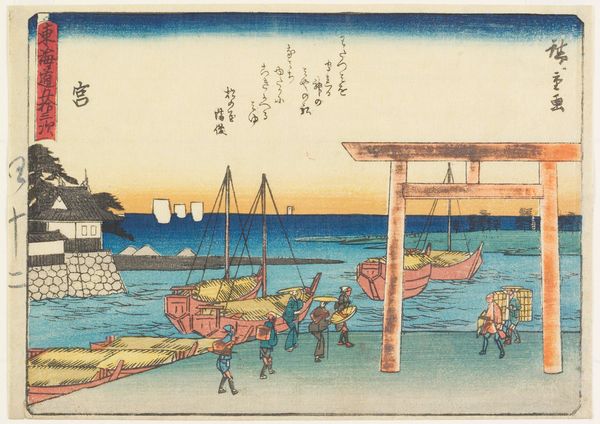
Night Scene on Yanagi-bashi Bridge and Restaurant Manhachi c. 1838 - 1840
0:00
0:00
Dimensions: 8 5/8 × 13 3/4 in. (21.9 × 34.9 cm) (image, horizontal ōban)
Copyright: Public Domain
Curator: Let's explore this beautiful ukiyo-e print, "Night Scene on Yanagi-bashi Bridge and Restaurant Manhachi," crafted by Utagawa Hiroshige around 1838-1840. It resides here at the Minneapolis Institute of Art, printed with ink on paper. Editor: Ooh, mysterious! It's like stepping into a hushed twilight world. The figures feel very close, but the rest of the composition stretches away. What is the formal arrangement doing here? Curator: Note how Hiroshige uses the bridge as a strong diagonal, slicing through the picture plane. This directs our eye to the illuminated restaurant and the subtle gradations of the water, while simultaneously rooting the scene in geometric order and drawing the viewer in. Editor: It feels like a captured moment, doesn't it? A quick snapshot of life along the Sumida River, even though woodblock printing is hardly spontaneous. Do you think that was his intent? Curator: Precisely! Hiroshige masterfully uses the conventions of ukiyo-e to create an illusion of fleeting time. The "floating world," right? Consider the figures—they ground the space, and create narrative tensions between leisure and landscape. Their forms are delineated by line and color, with no modelling and very few tonal values in a very formal encoding system, while other people relax inside. Editor: There is something dreamy and otherworldly in this color pallete. I find it curious that such subtle, gentle hues of watercolor represent what sounds like a rather rambunctious riverside party. Curator: The coloration certainly is working in tension with its more vibrant aspects. What really intrigues me, however, is the dialogue it establishes between Edo tradition and modern design sensibilities through the orchestration of pictorial space and form. The relationship that he engineers from these semiotic choices create something remarkable to my senses. Editor: I suppose that’s where the magic lies—in how a traditional medium depicts these transient moments so evocatively. It is hard not to linger on it, I’ve rather lost myself in the process. Curator: As have I, as have I... it’s like viewing a world both familiar and incredibly distant all at once. A real time capsule, as if that is ever truly achievable through mimetic artistic rendering!
Comments
No comments
Be the first to comment and join the conversation on the ultimate creative platform.
